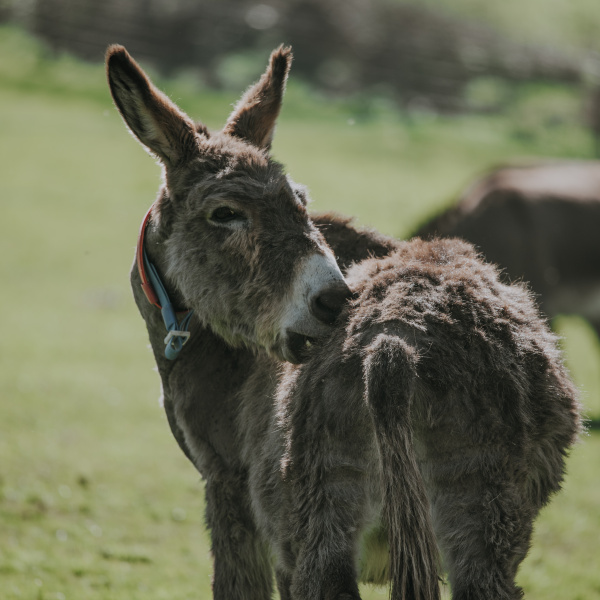Find out how The Donkey Sanctuary's ground-breaking research into the effects of diet has reduced the suffering of donkeys caused by gastric ulcers.
It has now been over ten years since this groundbreaking research into gastric ulcers in donkeys was conducted. We had noticed that the number of donkeys found to have gastric ulcers at post mortem was higher than would be expected. Between 2005 and 2006, 41% of donkeys that passed through our post mortem room had gastric ulcers, which are usually associated with high-stress lifestyles across all species, be that top-level competition horses or city bankers! So why were these seemingly sedentary animals living out their days peacefully in a sanctuary environment suffering so much with this?
A team of vets from The Donkey Sanctuary and scientists investigated the prevalence and how diet could affect gut health in our donkey herd. The donkeys’ digestive tract is in fact like a very finely tuned machine and can work exceptionally well under the right circumstances, which is why donkeys are such ‘good doers’.
Gastric ulcers are lesions on the lining of the stomach, causing symptoms including pain, loss of appetite, ill thrift and colic. They are usually caused when the acidic fluid in the lower (protected) half of the stomach splashes onto the upper (unprotected) half of the stomach. In a partially full stomach the acid level will be normal and not erode the stomach lining. Donkeys, like horses and ponies, are naturally trickle feeders avoiding the stomach ever becoming overly full or empty. So we know that feeding ‘little and often’ will provide the right quantity and frequency for optimising gut health.
![]() A second element that comes into play is the type of feed given. Donkeys produce stomach acid continuously, the main buffer for which is saliva, and when donkeys eat forage more saliva is produced than when they eat cereal grain-based feeds. The starch in cereal grains also break down in the stomach to produce further acids. So cereal feeds actually produce more acid, don’t stimulate enough saliva (the body’s natural antacid) and the pattern of large/infrequent feeding leaves the stomach empty, unprotected and vulnerable.
A second element that comes into play is the type of feed given. Donkeys produce stomach acid continuously, the main buffer for which is saliva, and when donkeys eat forage more saliva is produced than when they eat cereal grain-based feeds. The starch in cereal grains also break down in the stomach to produce further acids. So cereal feeds actually produce more acid, don’t stimulate enough saliva (the body’s natural antacid) and the pattern of large/infrequent feeding leaves the stomach empty, unprotected and vulnerable.
We identified that donkeys that were being fed with extra cereal grain feeds had a 55% prevalence rate, this means that out of 100 donkeys on cereal grains, 55 would have gastric ulcers. The rate for those fed on forage only was much less at 34%, and for fibre-based supplementary feeds was a similar 33%. The statistics clearly stacked up in favour of moving away from cereal grain-based feeds.
Over the next few years we worked with several equine feed companies who developed some high fibre products to fill the gap in the market. This meant we were able to have a choice of safe supplementary feeds available to us and the donkey-owning public. Saracen’s Donkey Diet (a high fibre nut) and MolliChaff Donkey (a short-chopped chaff product) are available to feed alongside TopChop Zero (very low-energy chaff) and TopSpec Donkey Forage Balancer for vitamin, mineral and micronutrient supplementation. As a direct result of this project we changed the entire supplementary feeding programme throughout The Donkey Sanctuary so that cereal grain-based products are never fed under any circumstances. We have decreased the number of donkeys under our care suffering from painful gastric ulcers by over 80% through the changes made following this research. At the time a large proportion of donkeys who were elderly or underweight were being fed cereal grain-based feeds in addition to forage.
